Trees Birds Mammals Fish Amphibians Reptiles
Wild Algarve
Bookshop
Hypericum elodes - Marsh St John's-wort
Phylum: Magnoliophyta - Class: Equisetopsida - Order: Malpighiales - Family: Hypericaceae
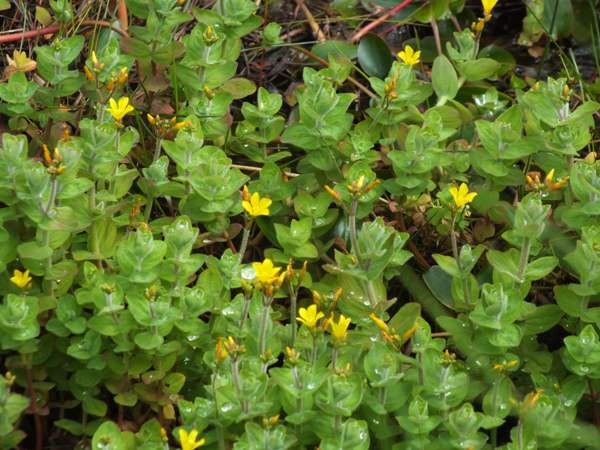
This is one of the wildflowers that has suffered a steep decline due to land drainage and the filling in of ponds.
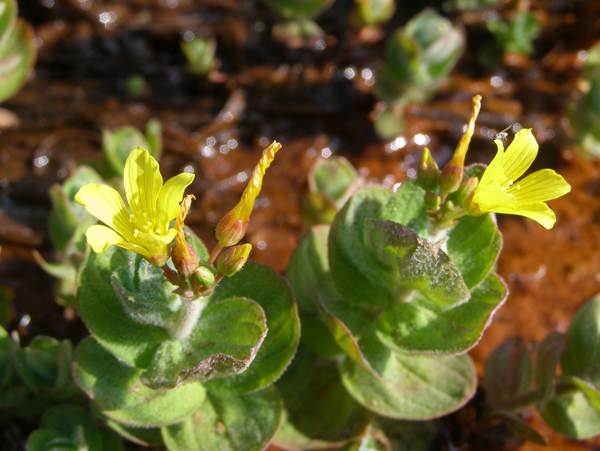
Description
The yellow five-petalled flowers are up to 1.5 cm across, but a characteristic of this plant is that the flowers are rarely open together. The petals are lined radially, and the stamens, held in three bunches, have yellow anthers. (Other St John's-wort species have orange anthers.) Looking rather like Pyramidal Bugle but with green leaves densely covered in hairs that give them a greyish appearance, Marsh St John's-wort has much broader oval leaves that other members of the family Hypericaceae.
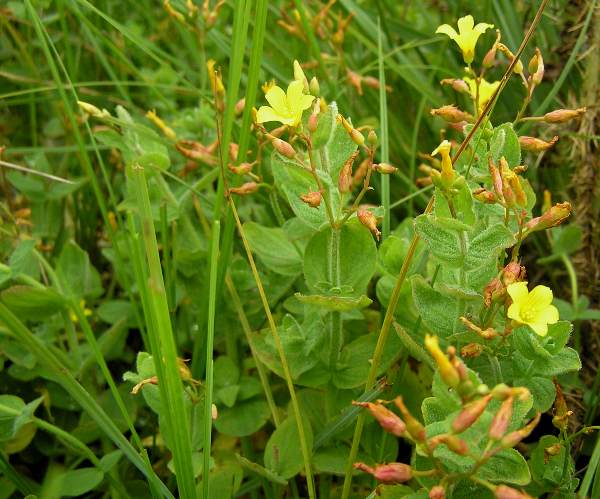
Distribution
Found throughout Britain, but most often on the western side and very rarely in the far north of Scotland, Marsh St John's-wort is also native to Ireland and is recorded in many parts of mainland Western Europe.
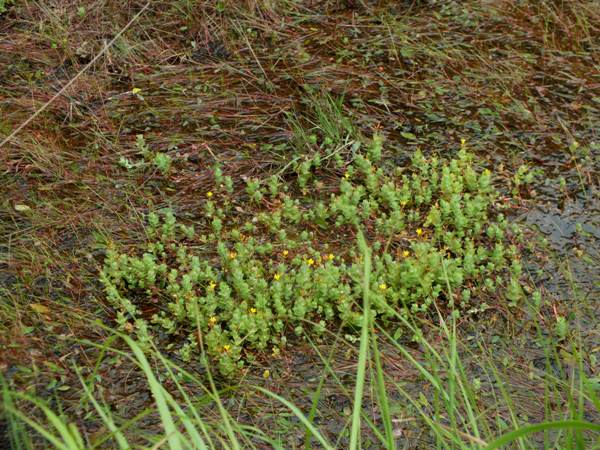
Habitat
Look out for this distinctive wildflower on permanently damp heathlands, in acidic bogs and marshes and in the shallow margins of ponds, where it often forms dense patches that spread outwards via its creeping stolons.
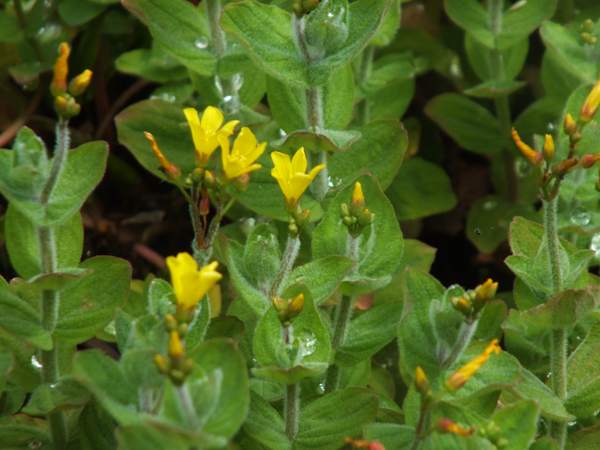
Flowering times
In Britain and Ireland, the various St John's-wort species are wildflowers of summer. Marsh St John's-wort is no exception and can be seen in flower from late June through to September.
Etymology
The genus name Hypericum comes from the Greek hyper, meaning above, and eikon, meaning picture; it reflects the fact that these plants were hung above pictures in the belief that this would serve to ward off evil spirits. The specific epithet elodes means growing in marshes and refers to the habitat in which this plant is found.
The common name St John's-wort also deserves some explanation. The various St John's-wort flowers are virtually guaranteed to be at their peak around Midsummer's Day (21st June) and they have a long and ancient history associated with various festivals and processions that have taken place (and still do in some European countries) at about this time of the year. The Feast of St. John the Baptist takes place around the same time - 24th June - and from this the plant was given the common name that is still used today and which superseded other names given to the plant in ancient times when it was used in Pagan rituals at mid-summer.
Throughout the UK, Europe and the Near East many St. John's-wort species grow both in the wild and as cultivated plants in gardens. One of the most beautiful of the European species that grows in the wild is Hypericum olympicum which has very large flowers measuring up to 5.5 cm in diameter.
Hypericum calycinum, more commonly known to us as Rose of Sharon, originates in the Near East, and has even larger flowers - around 7 cm in diameter - and this is the species most familiar to us from gardens and parks throughout the UK. It is an agressive shrub which has become widely naturalised in the countryside, and can often be seen on roadside banks and verges, and also along railway lines.
Other species from the UK include Trailing St. John's-wort Hypericum humifusum, Perforate St. John's-wort Hypericum perforatum, and Slender St. John's-wort Hypericum pulchrum.
Sue Parker's latest ebook is a revised and enlarged edition of Wild Orchids in The Burren. Full details here...
Buy it for just £5.95 on Amazon...
Sue Parker's new ebook is a comprehensive and fully revised edition of her acclaimed field guide to the Wild Orchids of Wales. Full details here...
Buy it for just £5.95 on Amazon...
Please Help Us: If you have found this information interesting and useful, please consider helping to keep First Nature online by making a small donation towards the web hosting and internet costs.
Any donations over and above the essential running costs will help support the conservation work of Plantlife, the Rivers Trust and charitable botanic gardens - as do author royalties and publisher proceeds from books by Pat and Sue.